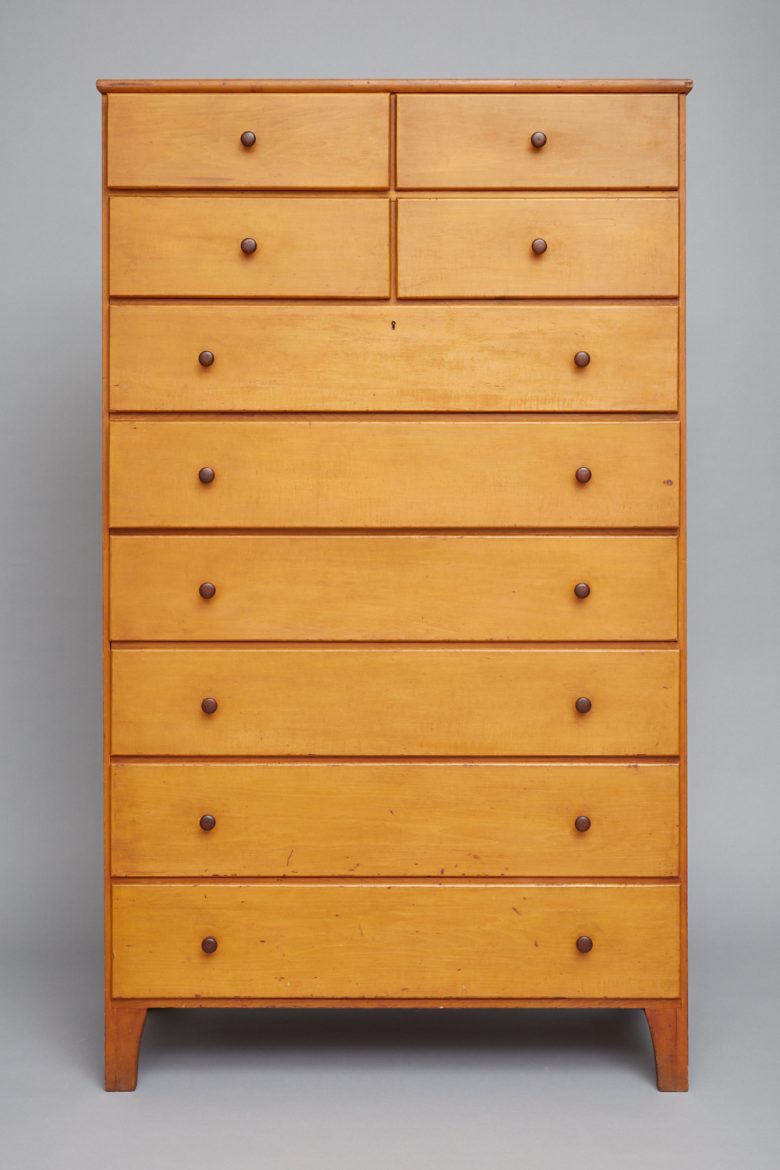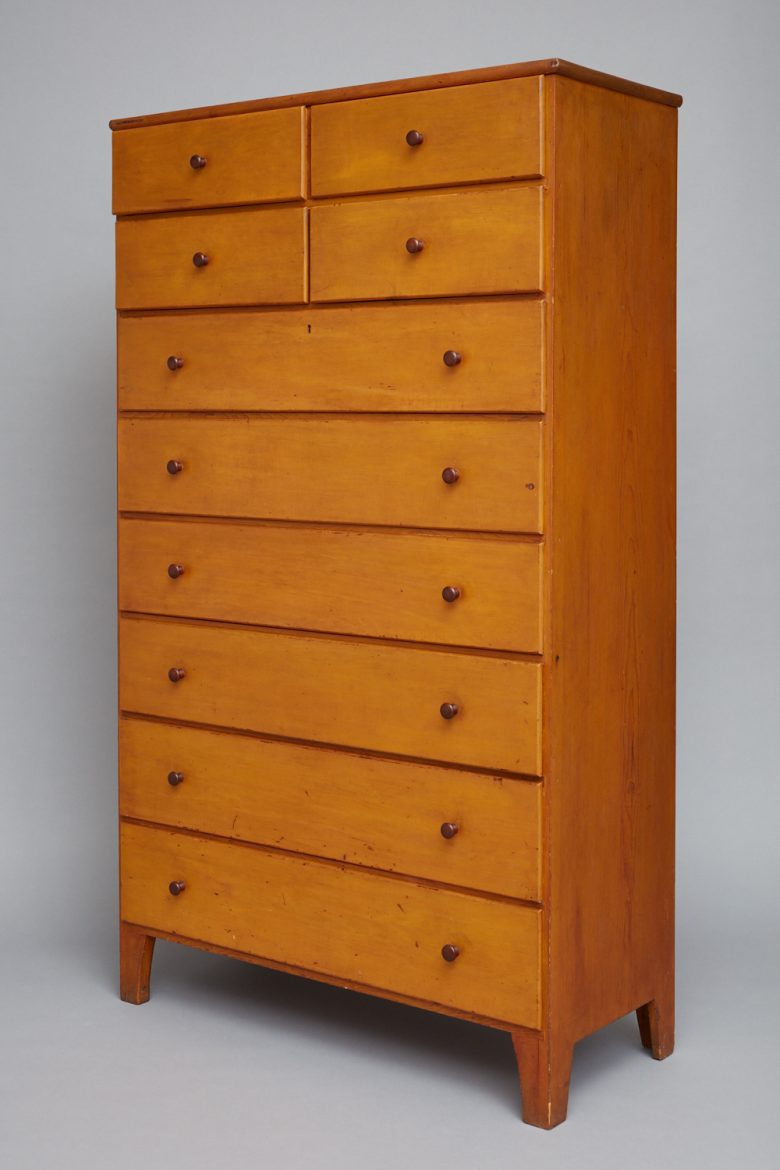
Case of Drawers, Church Family, Mount Lebanon, NY, ca. 1830, Shaker Museum | Mount Lebanon: 1950.554.1. John Mulligan, photographer.
This case of drawers is one of the finest pieces of Shaker furniture in the Shaker Museum’s collection. It is quintessentially Shaker – sized for communal life, yet pleasantly proportioned; minimally decorated, yet with all the necessary refinements; and finished with a yellow paint so sparingly applied that even the subtle grain of the basswood […]
This case of drawers is one of the finest pieces of Shaker furniture in the Shaker Museum’s collection. It is quintessentially Shaker – sized for communal life, yet pleasantly proportioned; minimally decorated, yet with all the necessary refinements; and finished with a yellow paint so sparingly applied that even the subtle grain of the basswood drawer fronts show through its golden surface. The piece has been exhibited often and published in nearly every worthy book about Shaker furniture. Yet – one of the most interesting aspects of this piece and others like it has not been significantly addressed. How was it used in the context of Shaker life? What we might call the social history of Shaker furniture is a challenging and unexplored topic of research. Much like the mystery of Shaker gift drawings done in a calligraphic script that is unreadable to the present day observer but that may have been easily interpreted by an inspired member of the community at the time it was received as a spiritual gift — the use of these pieces of furniture could perhaps only be explained by someone who used them.

Some of the furniture in Shaker homes have a clear social history. For example, we know how dining tables were used in the community. We know Shaker sisters and brothers ate separately so seating at the table would have been single gender. We know that Shakers ate in silence in squares of four members. Each square was provided with all the necessaries for the meal. No one needed to ask for food or condiments to be passed to them. Additional food would have been delivered to the table by those assigned that task so no one needed leave the table during the meal. That made the use of benches rather than chairs at the table possible for the first half of the nineteenth century – and so on. All of that information provides a pretty clear picture of how furniture was used in a Shaker dining room, but in the more intimate space of the Shaker retiring room, the question of “Where do I keep my socks?” becomes more difficult, if not impossible, to answer.
At the time this case of drawers was made Shakers were living four, five, or more people to a bedroom. They slept two to a bed, often with roll-out trundle beds for additional bodies, and appear, based on the large built-in furniture in some Shaker dwellings, to have shared furniture for clothing and personal belongings communally. There are not, like there are for some finer homes in the outside world, room by room furnishing inventories. We are left not even knowing what items would be provided to furnish a bedroom. The revised “Millennial Laws” of 1845 include a section titled, “Orders Concerning Furniture in Retiring Rooms.” While this provides details about the color of bedsteads and the patterns allowed for woven coverlets, only chairs, tables, and lampstands are mentioned as permissible furnishings. All other items – beds, cupboards, cases of drawers, etc. – must have been assumed to be part of any well-furnished Shaker home.
Whereas Shakers provide little information on how retiring rooms were furnished, the writings of visitors to Shaker villages provide less – at least during the first half of the nineteenth century. Visitors were generally not allowed to tour the private living quarters of the Shakers. Their descriptions of bedrooms are from the public accommodations provided to travelers. Those rooms are always described as clean, neat, and sparsely furnished.
It may not ever be possible to know how this piece of furniture was used. One could guess, for example, that if four Shakers shared this piece, each would have one small drawer and one large drawer – leaving two large drawers for communal bedding and bathing linens. Or, being that there is one drawer with a lock – there may have been one drawer for linens and one for everyone’s valuables. One could guess. Still, in a society that labeled so many drawers, closets, and cupboards as to their intended purpose – a simple paper label, such as “Socks,” on a case of drawers would tell us so much.